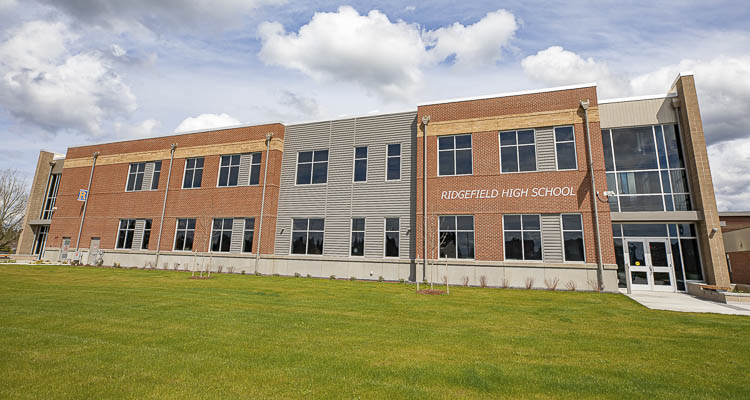
Heidi Pozzo states that ‘we don’t know how much of the current need for capacity will be satisfied at the high school with this plan or what the next steps are’
Heidi Pozzo
for Clark County Today
Usually, when making asks of investors, the asker presents a plan for how money will be spent, the outcomes anticipated, and what other investments are needed to achieve the goals and support growth.

But the Ridgefield School District hasn’t done that.
We don’t know how much of the current need for capacity will be satisfied at the high school with this plan or what the next steps are.
Which means, we don’t know when more bonds will be needed to build out the rest of the school. But given the high school will likely be short of space by the time the construction is complete, you’ll hear about it soon.
Washington regulations, RCW 36.70A.070(3), state that public entities must develop a capital facility plan that includes at least a six year plan of proposed locations and capacities of expanded or new facilities and how they will be financed.
That information was not included in the 2015 or the 2022 Capital Facility Plans.
The 2022 Capital Facility Plan only provides a dollar amount for K-8 and a dollar amount for 9-12. That’s all that was provided. A mechanical calculation of what it will cost to build capacity for the forecasted population. Not a plan of what facilities are needed.
Capacity at the high school is 1,020 per the 2022 Capital Facility Plan and enrollment is 1,224 per OSPI. How much will capacity increase if the bond goes through? It is hard to tell.
The district has not provided a stated capacity increase associated with the proposed addition in the current bond proposition. Rather, it provided a maximum headcount from the bargaining agreement, which doesn’t provide insight into how classrooms will be used. The district’s website also indicates that there is space designated for future CTE classrooms which could impact capacity.
Depending on what is included in the space, it could require more levy dollars as well.
Included is a metals classroom that will replace the existing classroom and nine additional classrooms in the diagrams provided. What will happen to the old lab and classroom? That information is not provided. If each of the nine classrooms added 25 additional seats, new capacity would be 1,245, very close to current enrollment.
But again, the district has not provided capacity numbers which would take into account how the classrooms are being used.
There have been a variety of comments about needs and plans at the high school that aren’t in the official, board approved, Capital Facility Plan documents. These comments include:
- Administrative offices are in a modular building and permanent space is needed. They were listed as an item that was to be included in the 2017 bond, but were not built.
- The commons have been highlighted as too small and in need of expansion during the 2022 attempt to pass the bond.
- As many as three new structures may be planned to connect to existing buildings, including the one in this proposal.
- Targeted capacity of 1,600-1,800 is noted in the four phases document
Yet, what we see is a metals lab and 10 classrooms being proposed for $20 million and a wrestling room and locker rooms being proposed for $11 million even though the four phases document indicates a preference for a specialty high school at a partner site and the second advisory committee in 2018 recommended remodeling the CTE building.
Additionally, it appears the plan is to demolish and rebuild the high school building by building.
Where does that leave us?
At the end of construction, should the propositions pass, the high school will have a metals lab, a wrestling room, new and remodeled locker rooms and will likely be short of classroom space.
Is that the best way to spend $31 million? Don’t you want to know the rest of the plan before deciding?
Heidi Pozzo has been a Ridgefield resident for 16 years. She is a concerned citizen who would like students to get a good education and thinks we can do it in a more cost-effective way.
Also read:
- Opinion: An unacceptable tax burdenNancy Churchill outlines new tax proposals in Washington state, warning of growing burdens on working families amid budget shortfalls and government overspending.
- POLL: Is it time for new leadership at Vancouver City Hall?A new weekly poll asks whether Vancouver voters should prioritize replacing the mayor and city council in the 2025 election.
- Opinion: How will the majority party’s new budget and tax proposals affect you?Rep. John Ley critiques the state’s proposed 2025-27 budgets, warning of record-breaking tax hikes and economic impacts.
- Opinion: Washington’s EV sales far short of next year’s state mandateTodd Myers highlights how Washington’s EV sales fall short of next year’s mandate, raising concerns over rising car prices and limited options.
- Letter: ‘Our state and local governments need to learn to live within their means’Camas resident Lauren Colas voices strong opposition to Proposition 1 and other tax proposals, calling for state and local governments to rein in spending.











Exactly what I found to be true as well. The last place to build too. We need 16 general classrooms at 25 kids each.
We get mixed messages that modular classrooms are bad, but then there’s poor planning to still be over capacity and continue using them.
Weird too… Somehow despite having over 1200 students, Ridgefield remains 2A, when schools like Marysville Pulchuck (837.4 students) are moving to 3A.